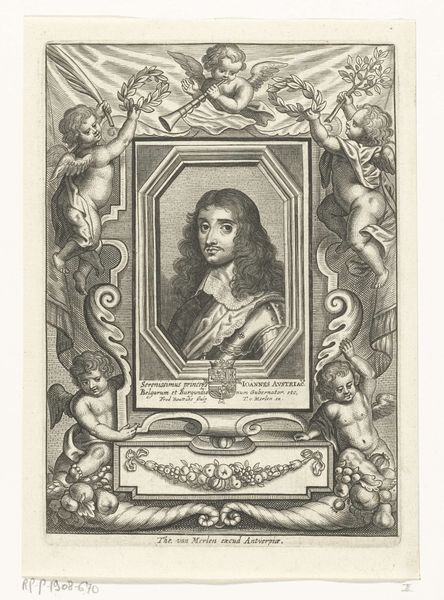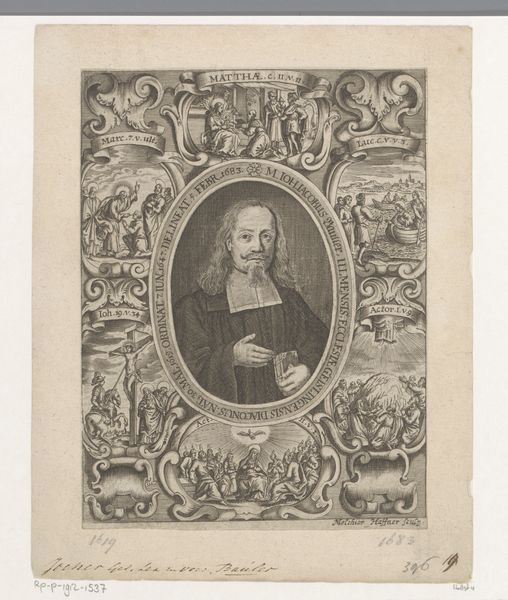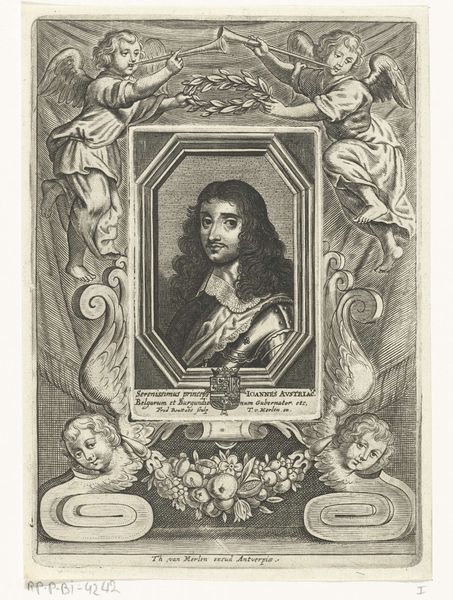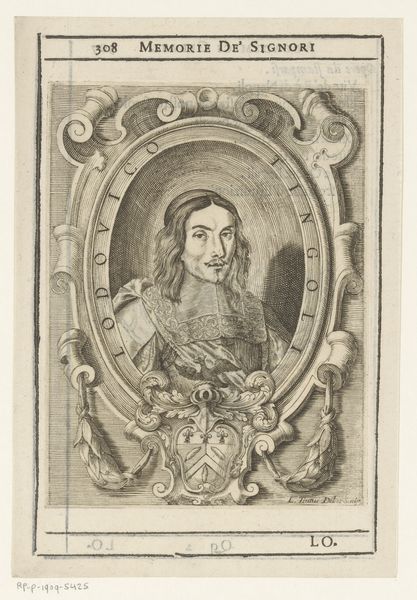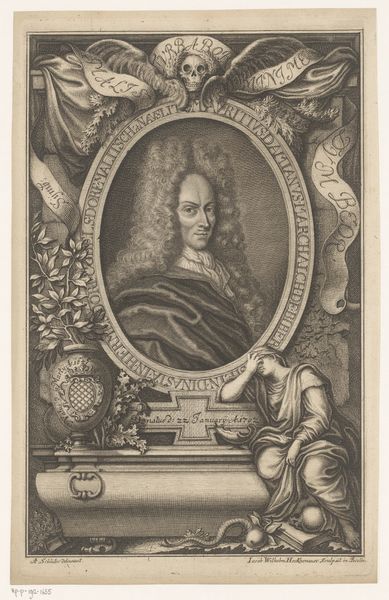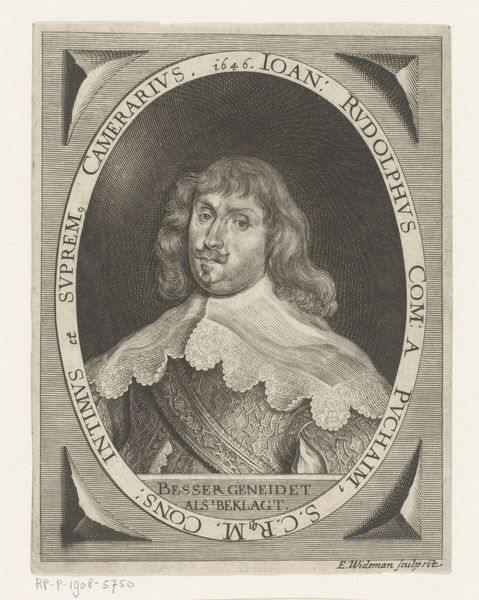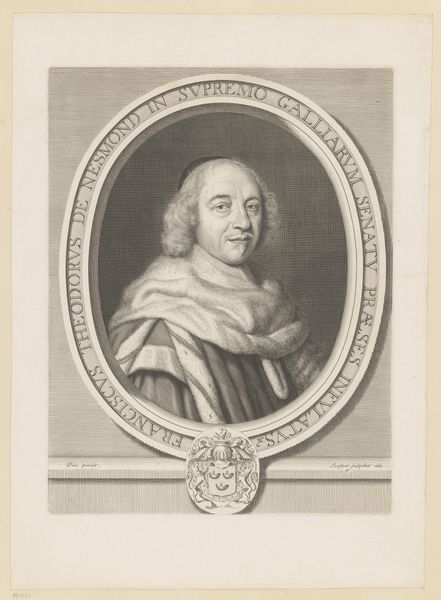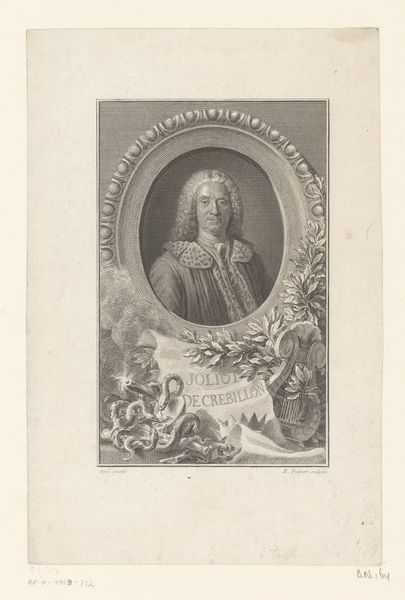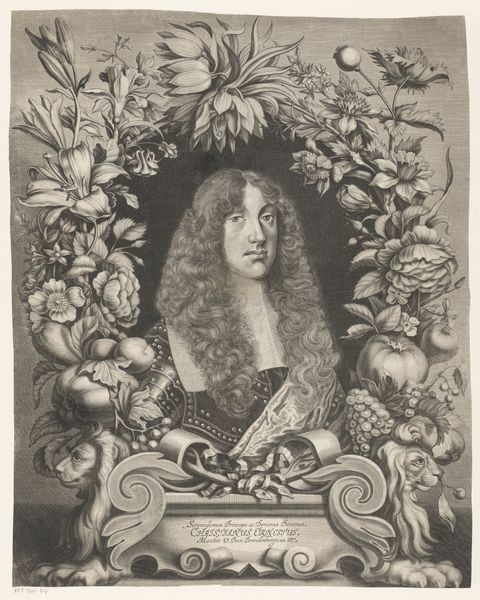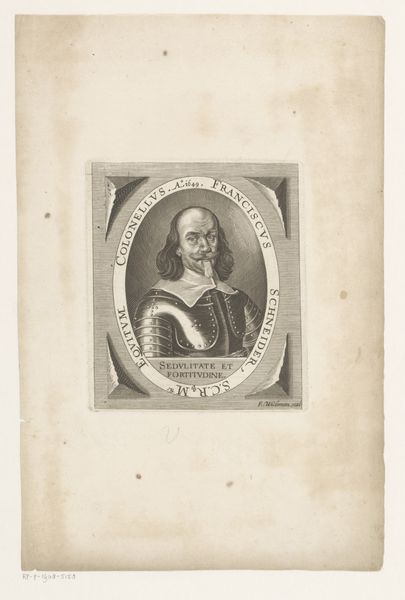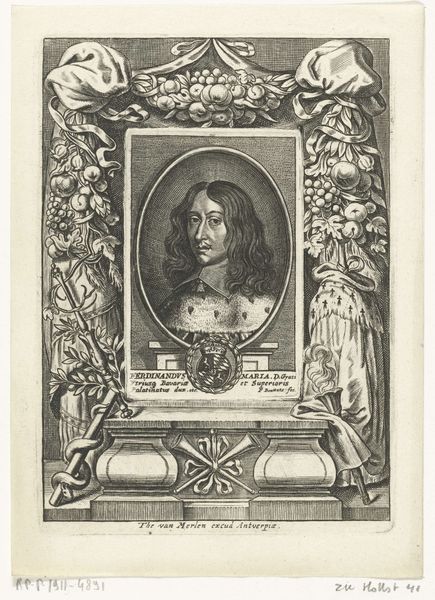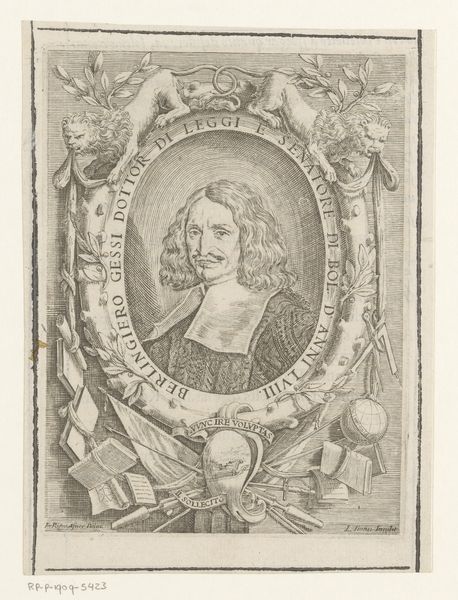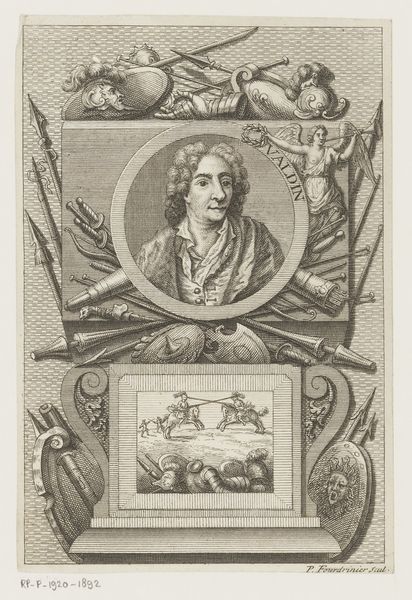
print, etching, engraving
#
portrait
#
baroque
# print
#
etching
#
old engraving style
#
engraving
Dimensions: height 178 mm, width 141 mm
Copyright: Rijks Museum: Open Domain
This self-portrait was made in 1655 by Nicolas Guillaume de La Fleur, using the printmaking technique of etching. The etcher coats a metal plate with a waxy ground, then draws through it with a needle to expose the metal. When the plate is dipped in acid, the exposed lines are eaten away. The longer the plate sits in the acid, the deeper the lines, and the darker they will print. We can see this in the deep, certain lines of the portrait's border, which give way to lighter, fainter lines that describe the artist's face. This isn't just a picture; it’s a result of skilled labor. The artist is not only depicting himself, but also demonstrating his mastery of a complex process. In his time, printmaking was on the rise as a vital method of visual communication. This etching thus sits at the intersection of artistic skill, technical knowledge, and emerging capitalist modes of production. It invites us to consider the rich interplay between art, craft, and society.
Comments
No comments
Be the first to comment and join the conversation on the ultimate creative platform.
